You can separate R, G and B into separate Mats using cv::split()
std::vector<Mat> planes(3);
cv::split(img, planes);
cv::Mat R = planes[2];
cv::Mat G = planes[1];
cv::Mat B = planes[0];
But you only need to separate them like this if you have code that is expecting a Mat with a single color channnel.
Don't use at<>() as the supposed duplicate suggest - it is really slow if you are sequentially scanning an image (but it is good for random access).
You can scan the image efficiently like this
for(int i = 0; i < img.rows; ++i)
{
// get pointers to each row
cv::Vec3b* row = img.ptr<cv::Vec3b>(i);
// now scan the row
for(int j = 0; j < img.cols; ++j)
{
cv::Vec3b pixel = row[j];
uchar r = pixel[2];
uchar g = pixel[1];
uchar b = pixel[0];
process(r, g, b);
}
}
Lastly if you do want to make a histogram, you can use this code. It is fairly old so I suppose it still works.
void show_histogram_image(cv::Mat src, cv::Mat &hist_image)
{ // based on http://docs.opencv.org/2.4.4/modules/imgproc/doc/histograms.html?highlight=histogram#calchist
int sbins = 256;
int histSize[] = {sbins};
float sranges[] = { 0, 256 };
const float* ranges[] = { sranges };
cv::MatND hist;
int channels[] = {0};
cv::calcHist( &src, 1, channels, cv::Mat(), // do not use mask
hist, 1, histSize, ranges,
true, // the histogram is uniform
false );
double maxVal=0;
minMaxLoc(hist, 0, &maxVal, 0, 0);
int xscale = 10;
int yscale = 10;
//hist_image.create(
hist_image = cv::Mat::zeros(256, sbins*xscale, CV_8UC3);
for( int s = 0; s < sbins; s++ )
{
float binVal = hist.at<float>(s, 0);
int intensity = cvRound(binVal*255/maxVal);
rectangle( hist_image, cv::Point(s*xscale, 0),
cv::Point( (s+1)*xscale - 1, intensity),
cv::Scalar::all(255),
CV_FILLED );
}
}
